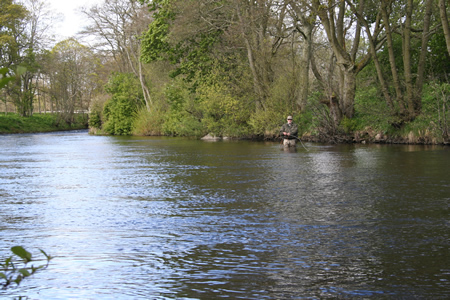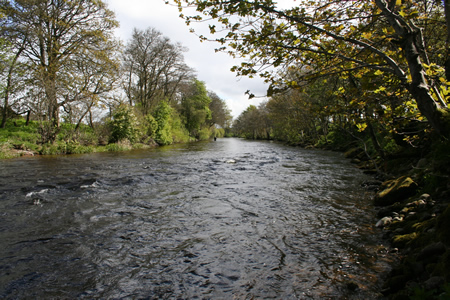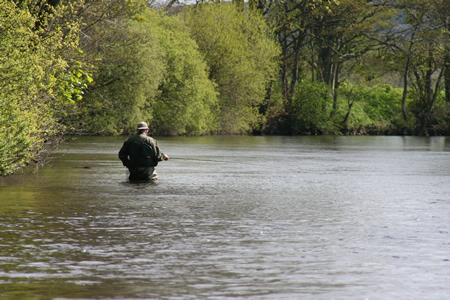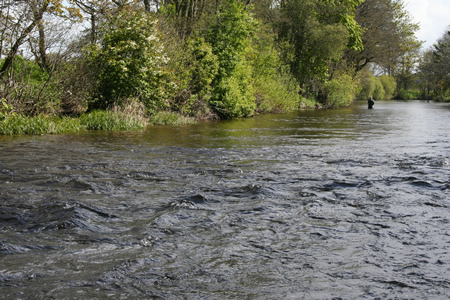These bulletin blogs represent news about Finavon and the South Esk, and my views as a riparian owner. They are not the views of any other organisation, nor are they designed to promote the interests of any individual or organisation other than Finavon Castle Water and factors affecting the fishery. Tony Andrews
With another rise in the river after overnight rain on Monday you would have thought that conditions were ideal for catching newly arrived spring salmon. But it was not to be. Despite seeing fish in Tyndals and the Willows, two of them which appeared to be fresh and in the teens of pounds, yesterday I had only one half-hearted offer from a salmon on the dangle in mid Tyndals. Conditions last night, as dusk fell, were absolutely perfect, but the fish simply were not moving to the fly; only the occasional desultory splash reminded me that there were fish in the pools.
From the Fishpal website it seems that everyone else is experiencing the same unwillingness of fish to take the fly. But we shouldn’t use evidence of this unproductive period to make statements about the lack of spring fish. I am not claiming that there are high or low numbers of fish in the river: I am saying only that I don’t know whether there are or not. What I can say as fact is that there are some fish in the river and the ones I have caught, and continue to see in the pools, appear to be in good condition, despite a minor outbreak of disease.
Report on salmon found dead on 17 April. Regular readers of these blogs may remember that Moray and I found a large dead salmon beside Nine Maidens Pool (Castle Beat) on the 17th of April. The fish was 93.5 cms in length with a girth of 49.5 cms. It had died from lesions which had become infected with sacrolegnia. The cause of the lesions is unknown. I sent some scales to the Montrose office of Marine Scotland and received the following data from them; The fish had spent two years in the river as a parr and three winters at sea. It was a male fish. Judging by the spaces between the scale circuli it is clear that its second year at sea was the period of maximum growth during its life cycle.
With the Usan nets now killing every salmon they catch, except the ones that are radio-tagged by the MSS biologists, fewer fish will be entering the river, which of course is what has been going on for at least 150 years in periods of both abundance and scarcity. With netting effort now much reduced from a century ago, although methods and equipment may be more efficient than in the past, and if the weekly 60 hour slap is exercised, there should be a reasonable ‘escapage’ of salmon into the South Esk. Moreover, if we continue to get freshets as we are at present, we can expect fish to enter the river directly and avoid the often fatal trap of the gyres and whorls of migration close to the shore south of Scurdie Ness.
Update at 0945 on 9/5. A 7 lbs cock fish from Tyndals was caught as it clouded over after a bright & sunny start to the day. Tyndals has held fish consistently from late February.
TA



